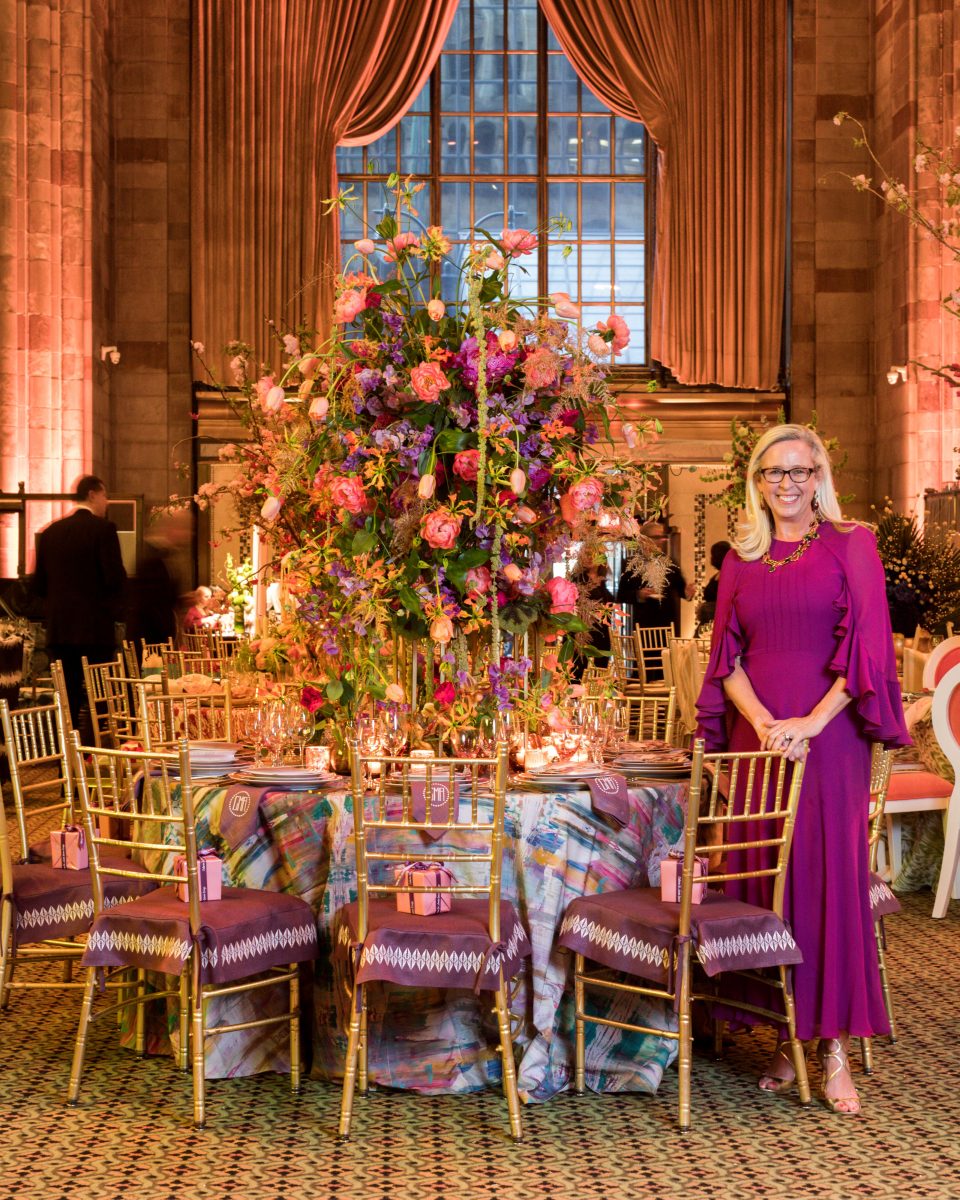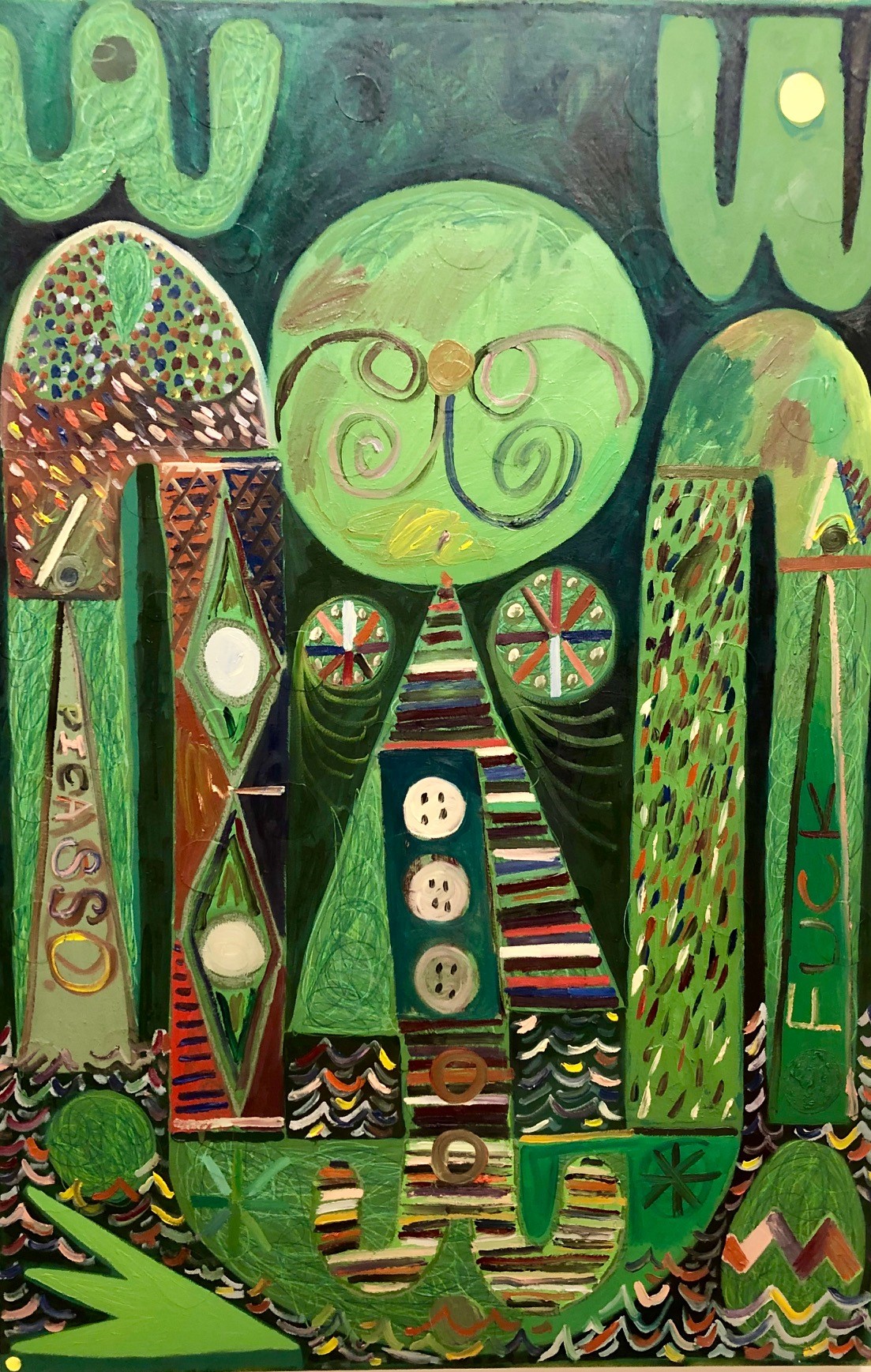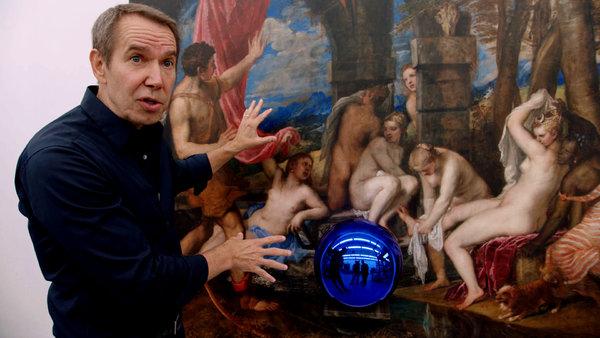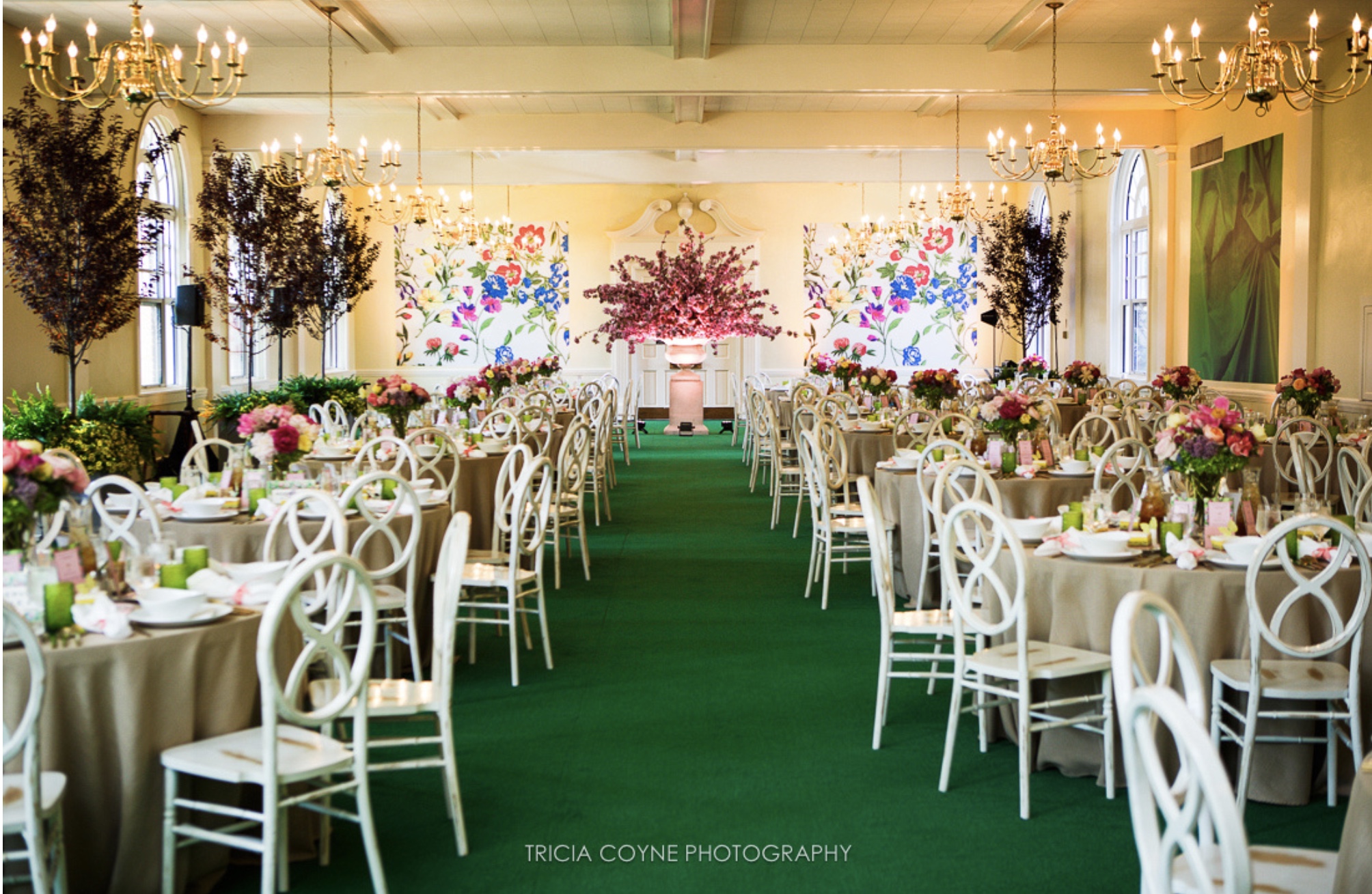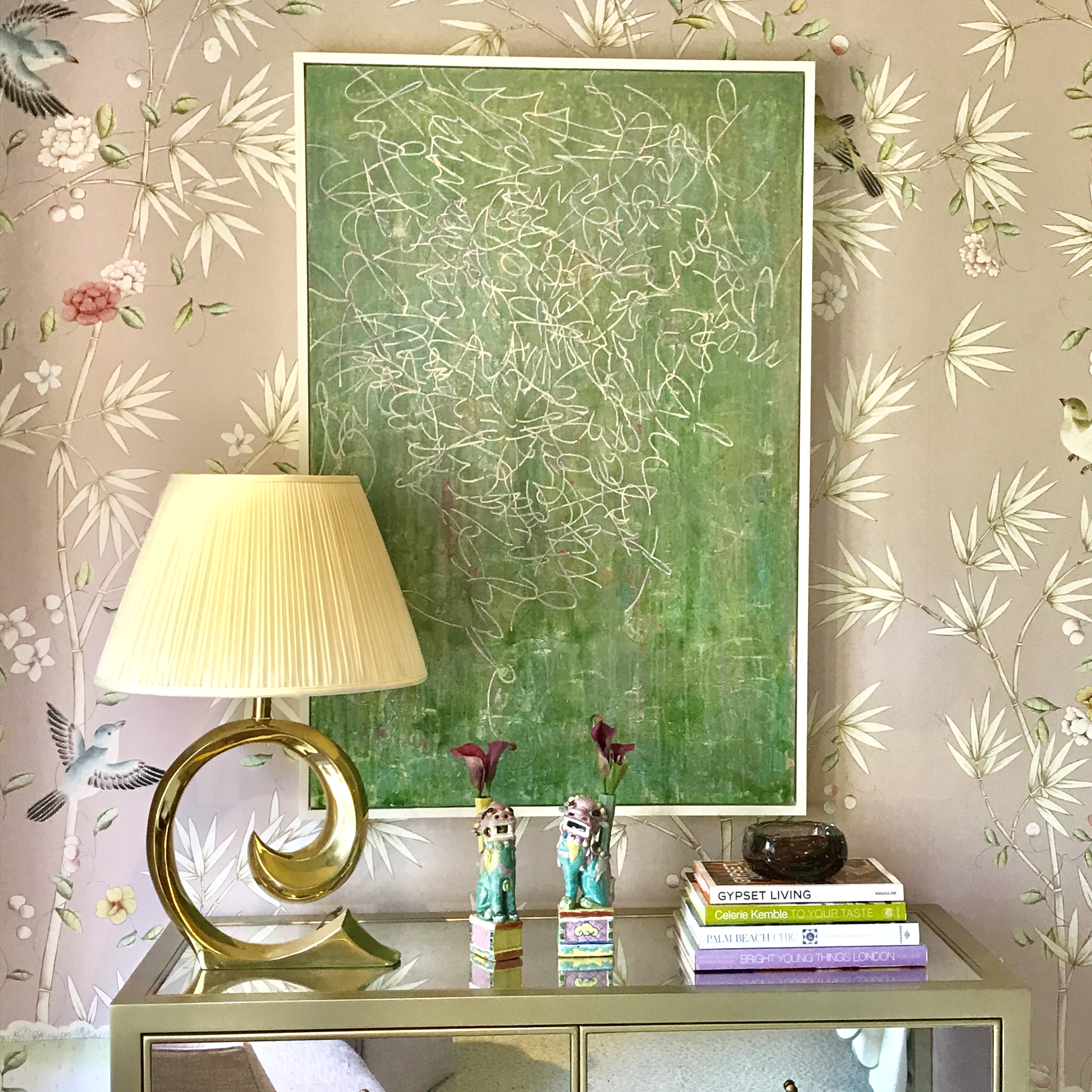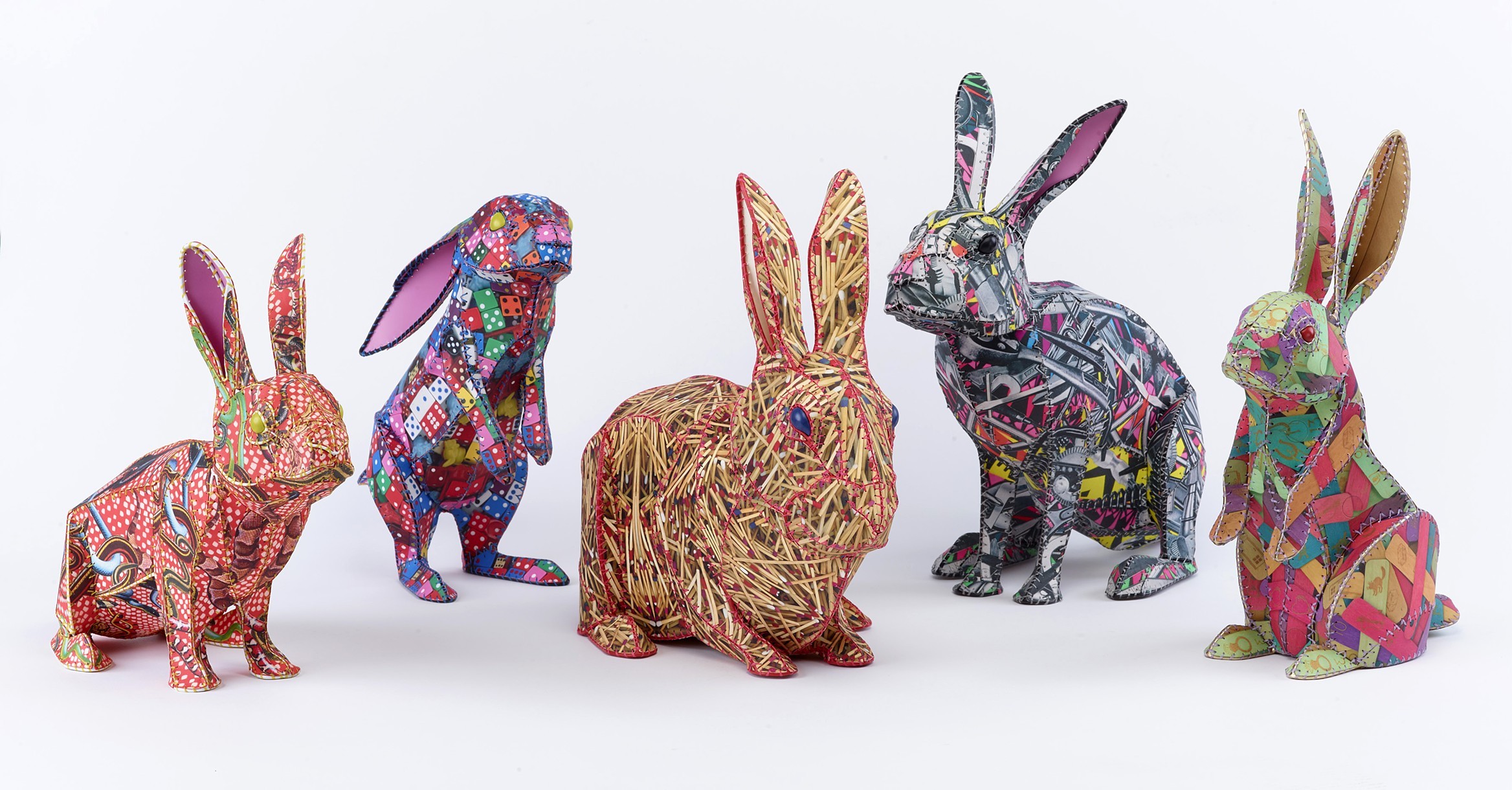“You have to step over the boundaries sometimes just to find out where they are.” -Damian Hirst

Ever since I was a little girl, I have been mesmerized by the fantasy of lost treasure. It all began with a beach trip where my little brother and I found a “real life” treasure on one of the North Carolina barrier islands. To a 5 and 3 year old, we could not believe our luck. After hearing the stories of pirates, shipwrecks and buried treasure from our cousins, we were convinced this dilapidated box was indeed pirate booty. An ancient treasure map of the island fell out as we opened it along with old coins, rusted nautical instruments, and other items from the “ship.” It was not until years later we discovered that our fun-loving mother had concocted this adventure with the help of aunts, uncles and older cousins to make our summer unforgettable.
I was incredibly intrigued to read about Damian Hirst’s “Treasures from the Wreck of the Unbelievable” that he had spent over 10 years working on for this year’s Venice Biennale. Lauded as the most expensive exhibition ever created, the show has created much fanfare and controversy in the art world….as only one of Damian Hirst’s can. Always pushing boundaries, the artist’s concept for the show is pure fiction….created in Damian’s imagination and brought to life in a palazzo on The Grand Canal in Venice.
As luck would have it, I happened to be in Venice the opening weekend off the show and got to see the mind-blowing exhibition first hand. Special thanks to artist and curator Brad Thomas for letting me know about the opening date. See below for the show notes and more details about this imaginary treasure…
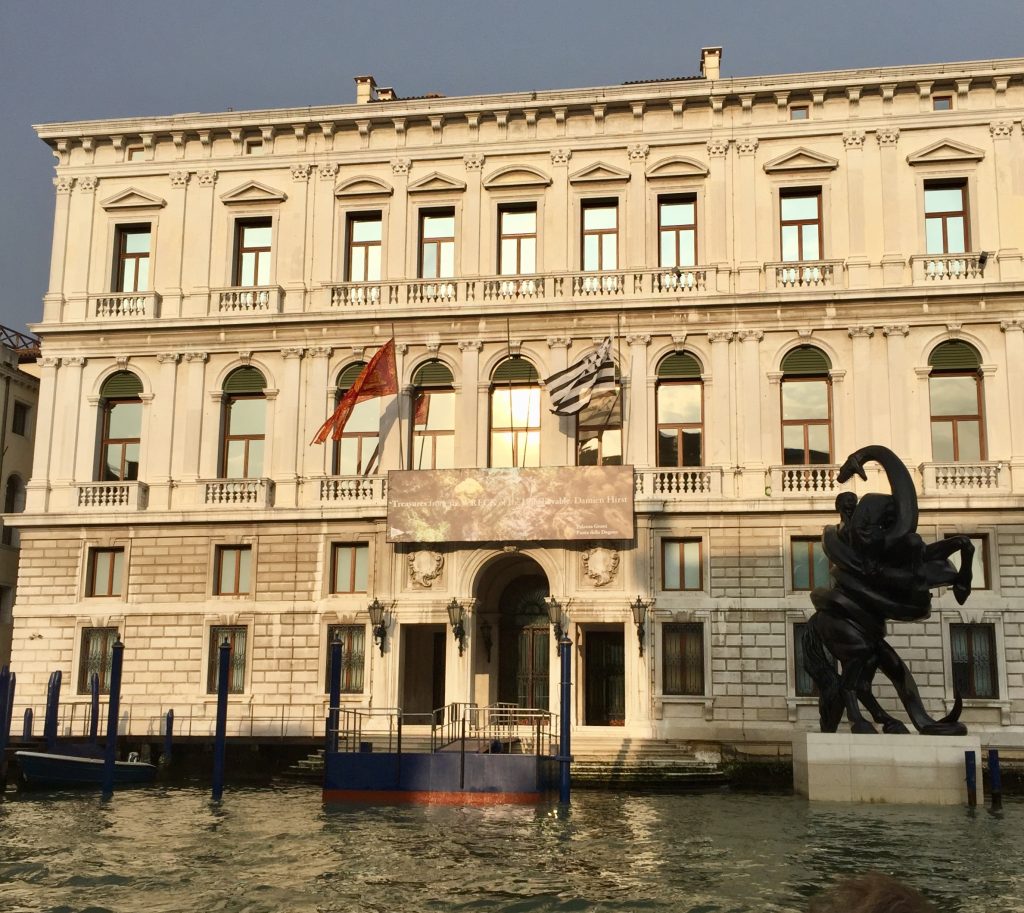
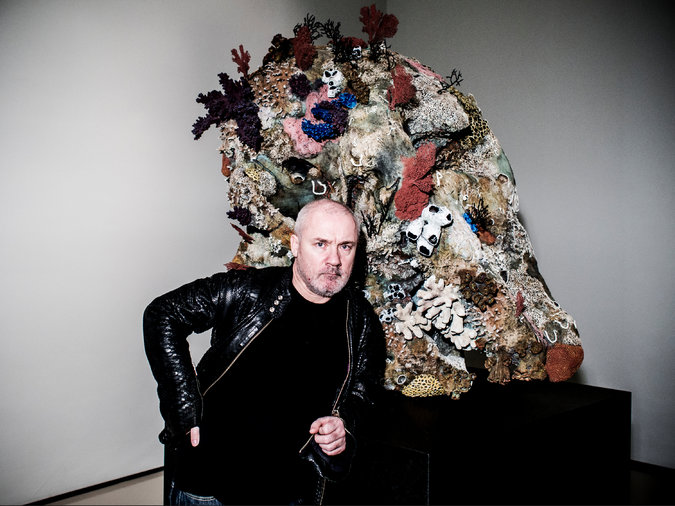
Courtesy of the New York Times
EXHIBITION NOTES
‘Treasures from the Wreck of the Unbelievable’. It is the first major solo exhibition dedicated to Damien Hirst in Italy since the 2004 retrospective at the Museo Archeologico Nazionale in Naples (“The Agony and Ecstasy”) and is curated by Elena Geuna, curator of the monographic shows dedicated to Rudolf Stingel (2013) and Sigmar Polke (2016) presented at Palazzo Grassi.
The exhibition is displayed across 5,000 square meters of museum space and marks the first time that Palazzo Grassi and Punta della Dogana, the two Venetian venues of the Pinault Collection, are both dedicated to a single artist.
Damien Hirst’s most ambitious and complex project to date, ‘Treasures from the Wreck of the Unbelievable’ has been almost ten years in the making. Exceptional in scale and scope, the exhibition tells the story of the ancient wreck of a vast ship, the ‘Unbelievable’ (Apistos in the original Koine Greek), and presents what was discovered of its precious cargo:(discovered off the coast ion East Africa in 2008) the impressive art collection of Aulus Calidius Amotan – a freed slave better known as Cif Amotan II (a freed slave who had amassed great wealth who lived between first and early second century)– which was destined for a temple dedicated to the sun.


DAMIAN HIRST IS BACK WITH AN UNDERWATER FANTASY/ WILL COLLECTORS CARE? (CAROL VOGEL FOR THE NEW YORK TIMES)
It’s a giant financial gamble for art’s king of controversy, who is trying for a comeback.
VENICE — Damien Hirst is staring into the eyes of a jade Buddha, its face seemingly abraded by the vestiges of time. “I think he looks damn good, considering he’s 2,000 years old,” he said, straining to keep a straight face. Nearby, the sculpture of a pharaoh fashioned from blue granite and displaying a gold nipple ring bears an uncanny resemblance to Pharrell Williams.
Is the face really that of the singer? “You could say that,” Mr. Hirst responded. “It’s all about what you want to believe.”
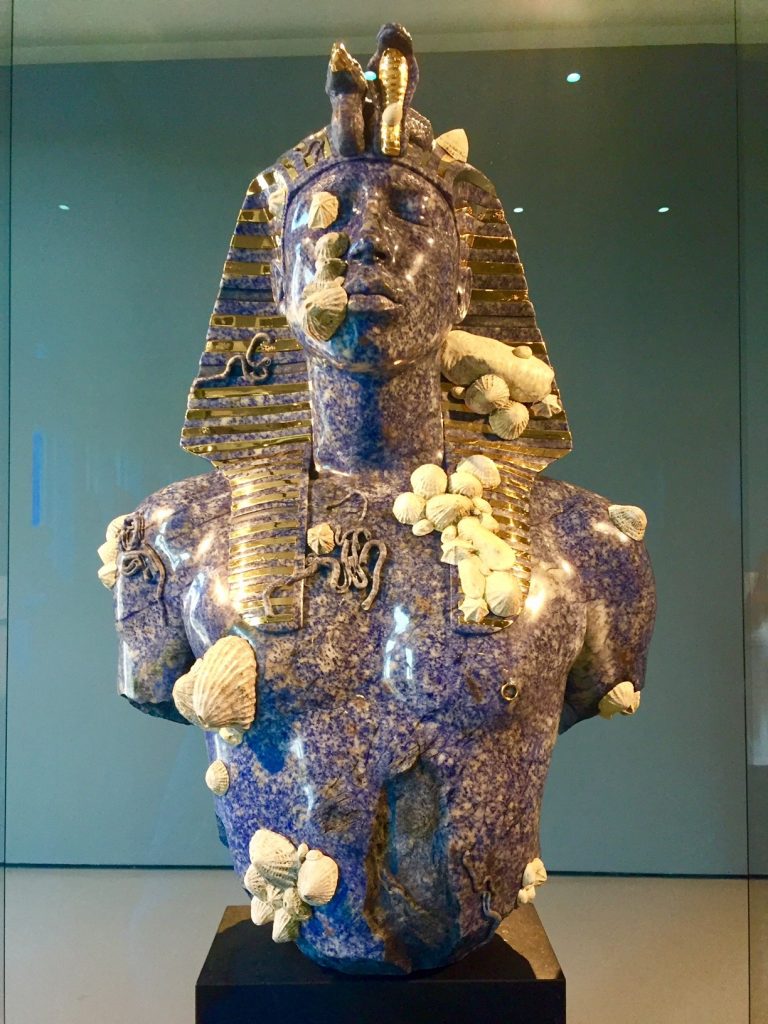
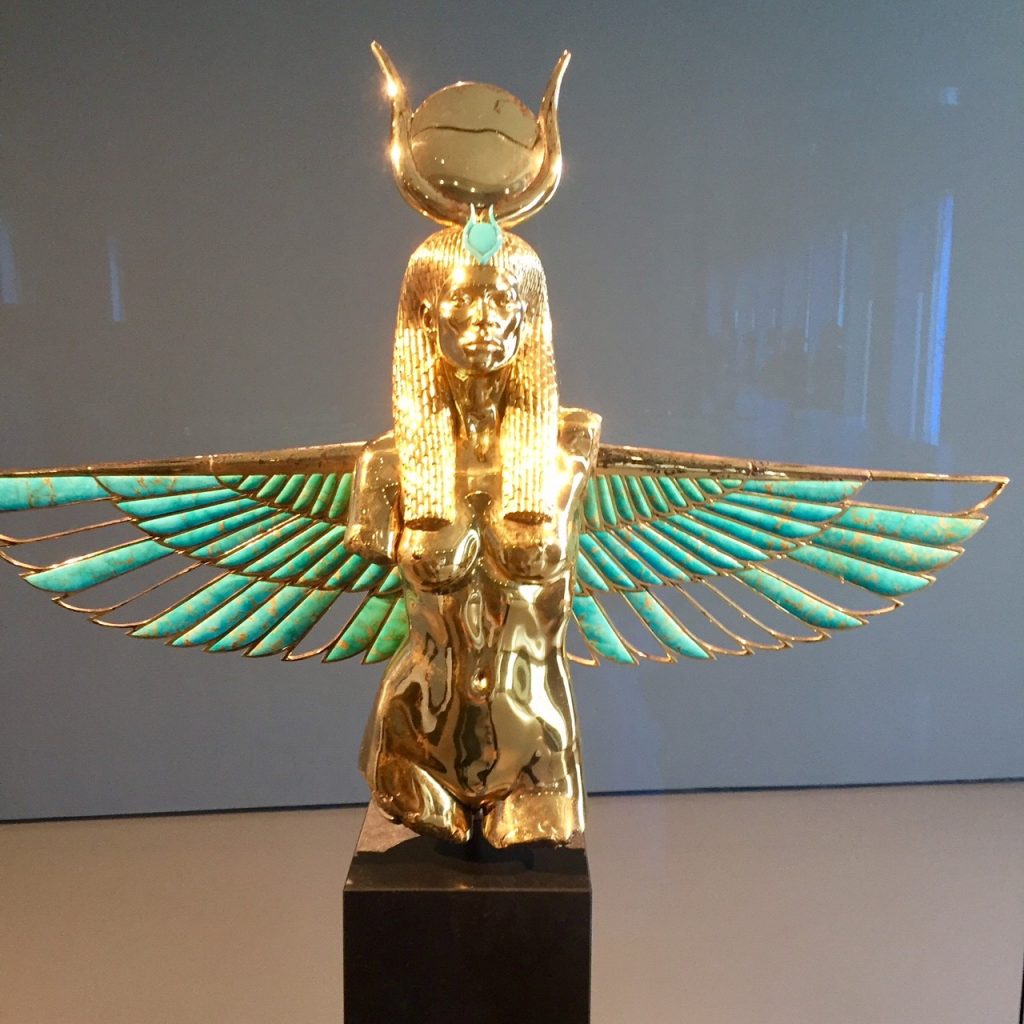
After years of uncharacteristic silence, this artist known for his love-it-or-hate-it artworks is orchestrating his own comeback. On a recent morning, dressed all in black, Mr. Hirst could be found in the soaring entrance of the Palazzo Grassi watching his crew put the finishing touches on an extravaganza worthy of Cecil B. DeMille — his first major show of new work in 10 years. Opening to the public on Sunday, April 9, and called “Treasures From the Wreck of the Unbelievable,” it is an underwater fantasy, with sculptures like the Buddha and hundreds of other objects fashioned to look as though they were antiquities dredged up from the bottom of the sea. The works will fill the Palazzo Grassi and the Punta della Dogana, two museums run by François Pinault, the Parisian collector who is also the owner of Christie’s auction house.

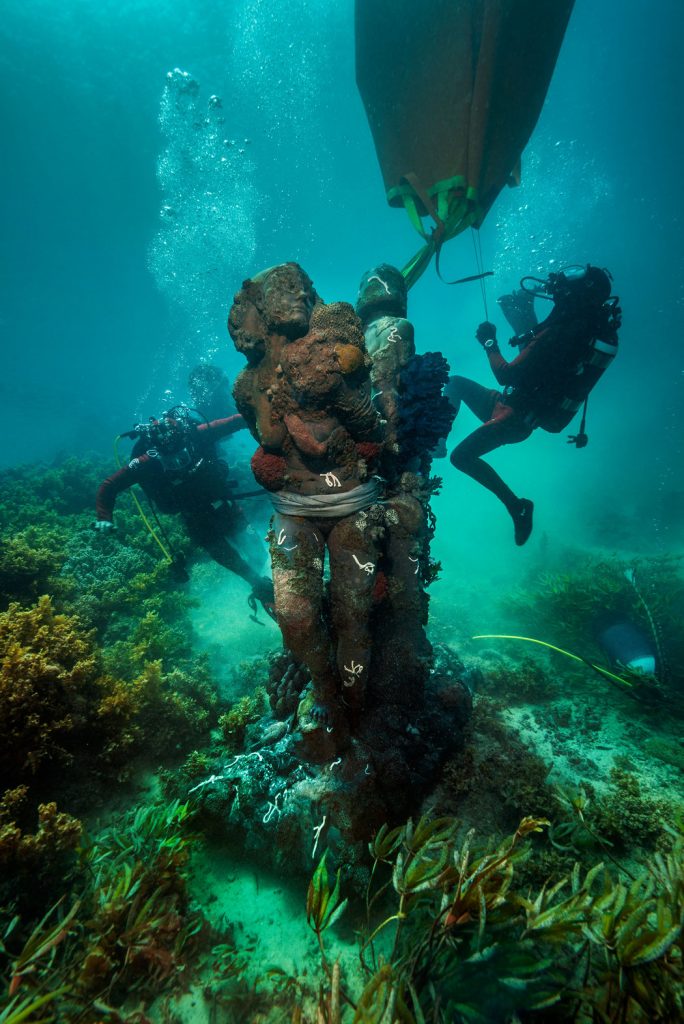
Mr. Hirst hired a film crew to shoot divers on a pretend rescue mission off Zanzibar documenting sculptures being pulled from the sea, including “Children of a Dead King.”CreditDamien Hirst and Science Ltd. All rights reserved, Artists Rights Society (ARS), New York, 2017; Photograph by Christoph Gerigk
The show is widely seen as Mr. Hirst’s attempt, at 51, to kick-start his career, which has suffered since 2008, when the financial and art markets crashed. Tapping into the age-old romance of shipwrecks, he and his patron are embarking on a giant artistic and financial gamble. “Treasures” cost Mr. Hirst millions of dollars to produce and Mr. Pinault millions to present (exact figures were not disclosed by either man). Collectors who have been offered the works report that prices start around $500,000 apiece rising to upward of $5 million. With Damien Hirst’s market untested on such a grand scale, the question the art world is asking is, will he sink or swim in Venice?

Francesco Bonami, a curator who organized a major exhibition of Mr. Hirst’s work in Doha, Qatar, four years ago, said the latest Hirst production “goes beyond good or bad,” adding: “In his bombastic, exaggerated way, Damien has created a narrative the likes of which the public has never seen. Many will call it bad taste or kitsch, but it’s more than all of that. It’s Hollywood.”
In keeping with Mr. Hirst’s reputation as a serial shocker, “Treasures” presents a visual, believe-it-or-not fairy tale rooted in mythology, theology and the artist’s imagination. The story goes like this: In 2008, a shipwreck was discovered off the coast of East Africa that is said to have contained a stash of treasures belonging to Cif Amotan II, a freed slave from northwest Turkey who lived between the first and early second centuries and who had amassed great wealth. His legendary collection of art and artifacts was placed on a ship, the Unbelievable, which sank. Divers rescued more than 100 works — giant sculptures of sea monsters encrusted with coral and semiprecious stones; golden monkeys, unicorns and tortoises; as well as a goddess whose face looks oddly like Kate Moss, a marble pharaoh that resembles Rihanna and a bronze statue of Mickey Mouse, covered with centuries of marine decay.
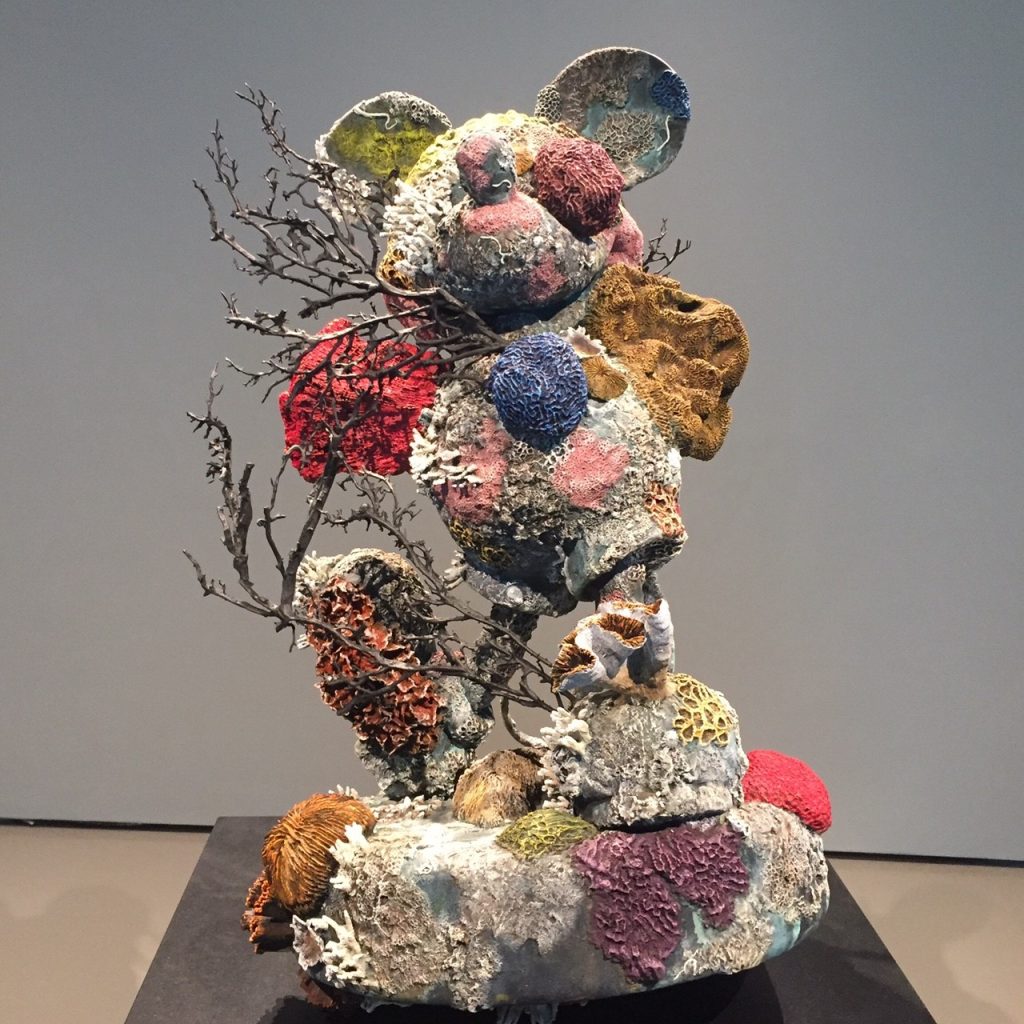
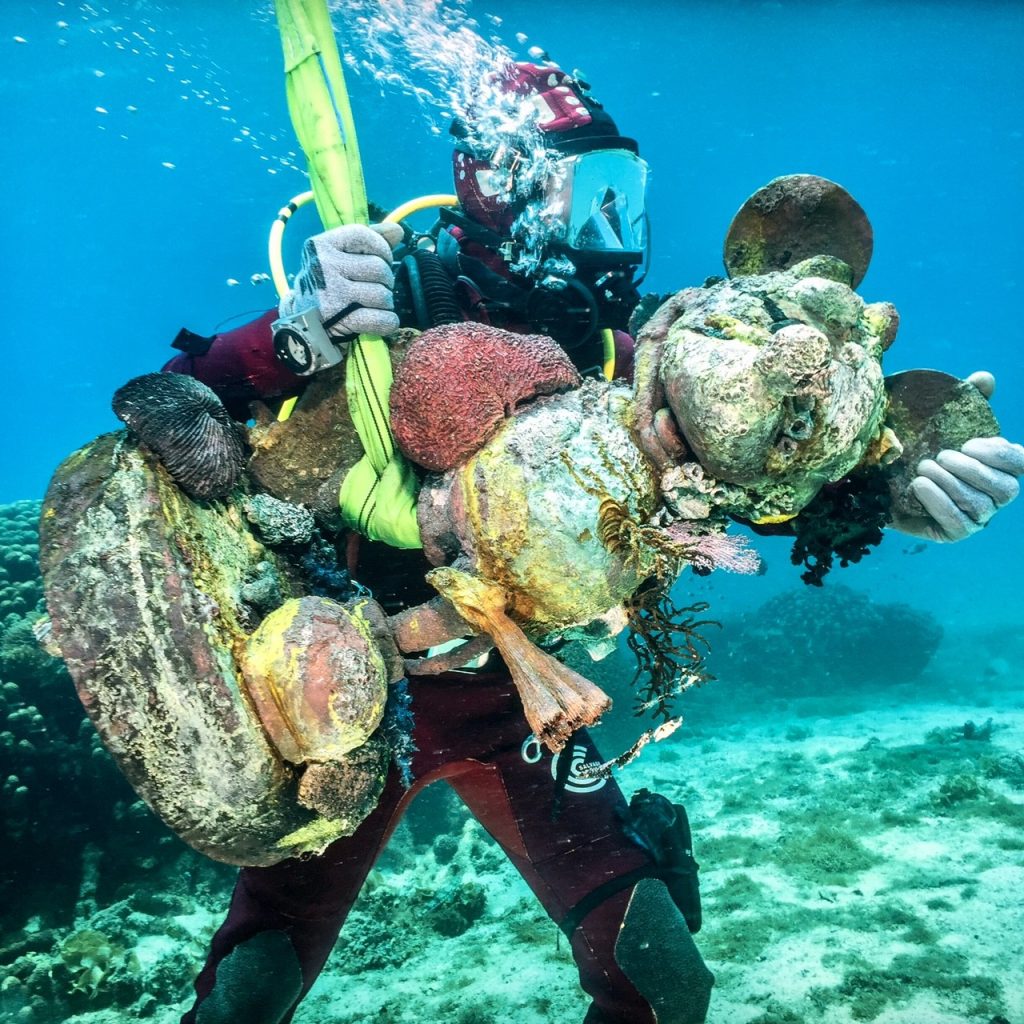
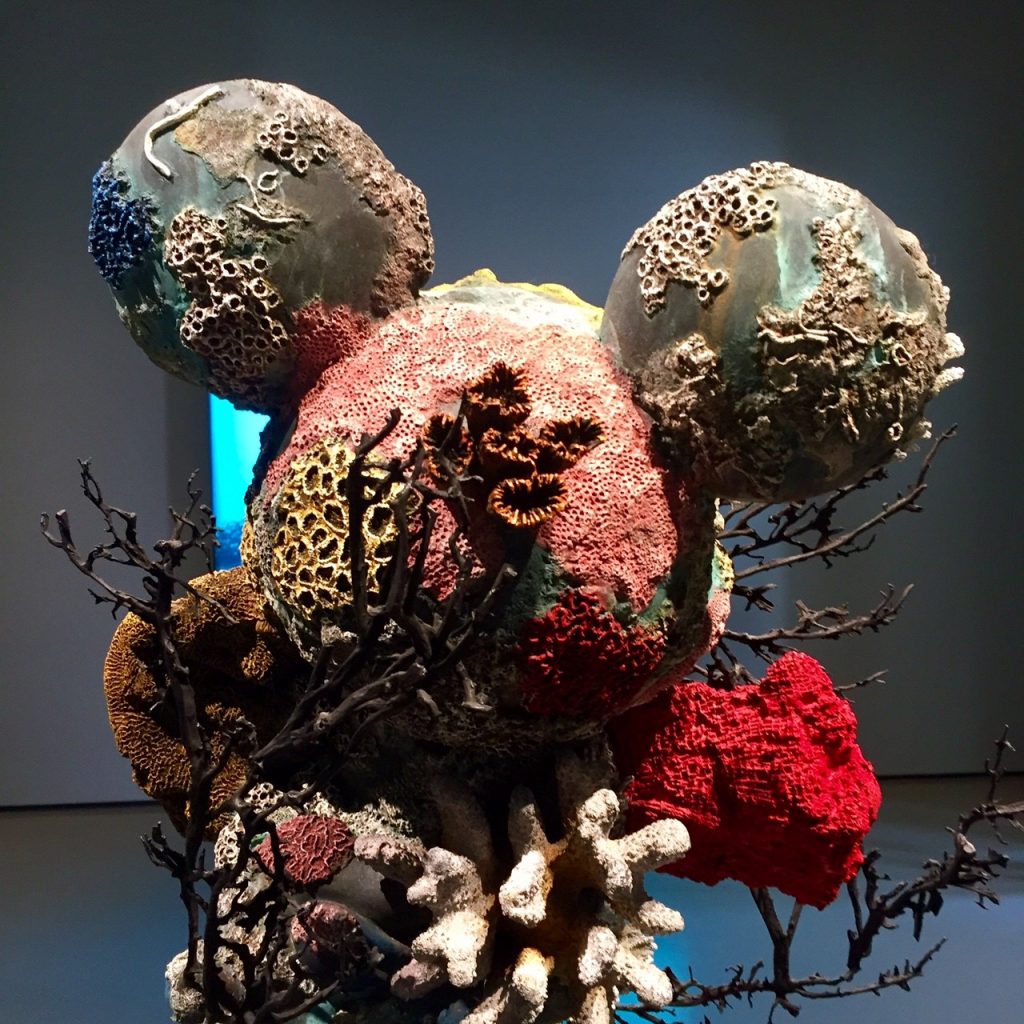
“Mickey,” a bronze sculpture of Mickey Mouse imagined as an antiquity dredged up from the bottom of the sea. CreditDamien Hirst and Science Ltd. All rights reserved
Some have already begun to kick up a fuss. In March, animal activists here dropped 88 pounds of dung outside the Palazzo Grassi, including a message at the museum’s door that read “Damien Hirst Go Home.” (The show contains neither dead animals nor butterflies, another Hirst signature.) The reason for their protest, they said, is that the exhibition is “an insult to a city of REAL art.”
Still, for every critic, there is a Hirst fan. “Damien’s career has been made without regard to curators or critics,” said Nicholas Serota, the departing director of the Tate, which held a 2012 Hirst retrospective. “That leaves the museum world a bit nervous.”
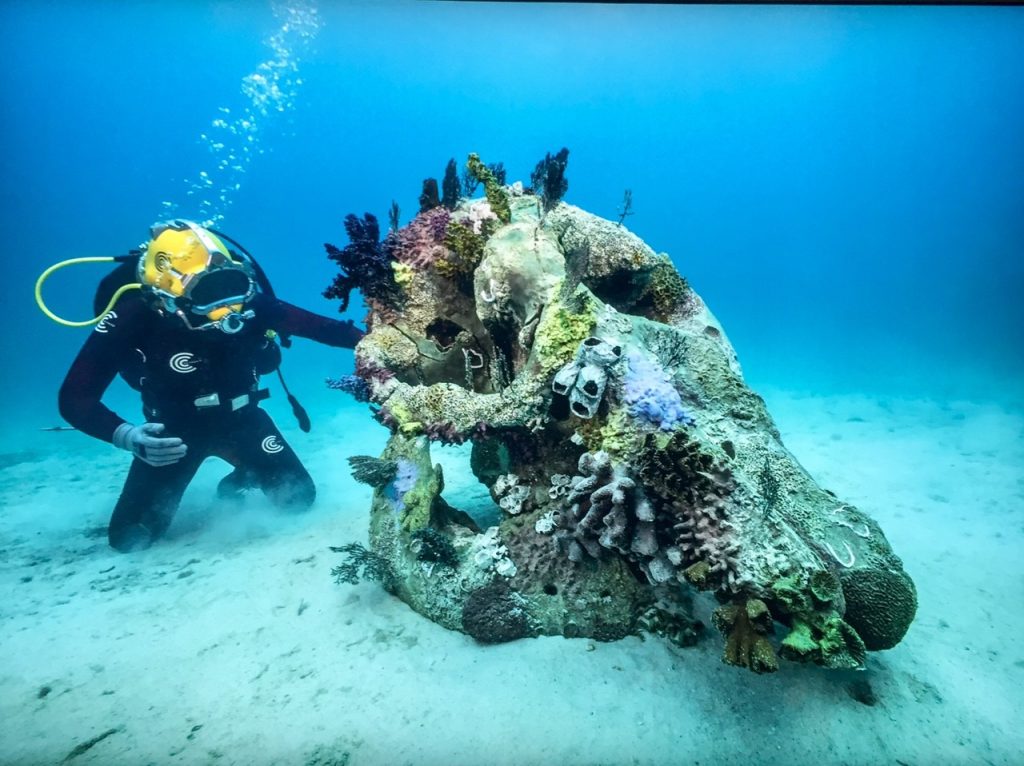
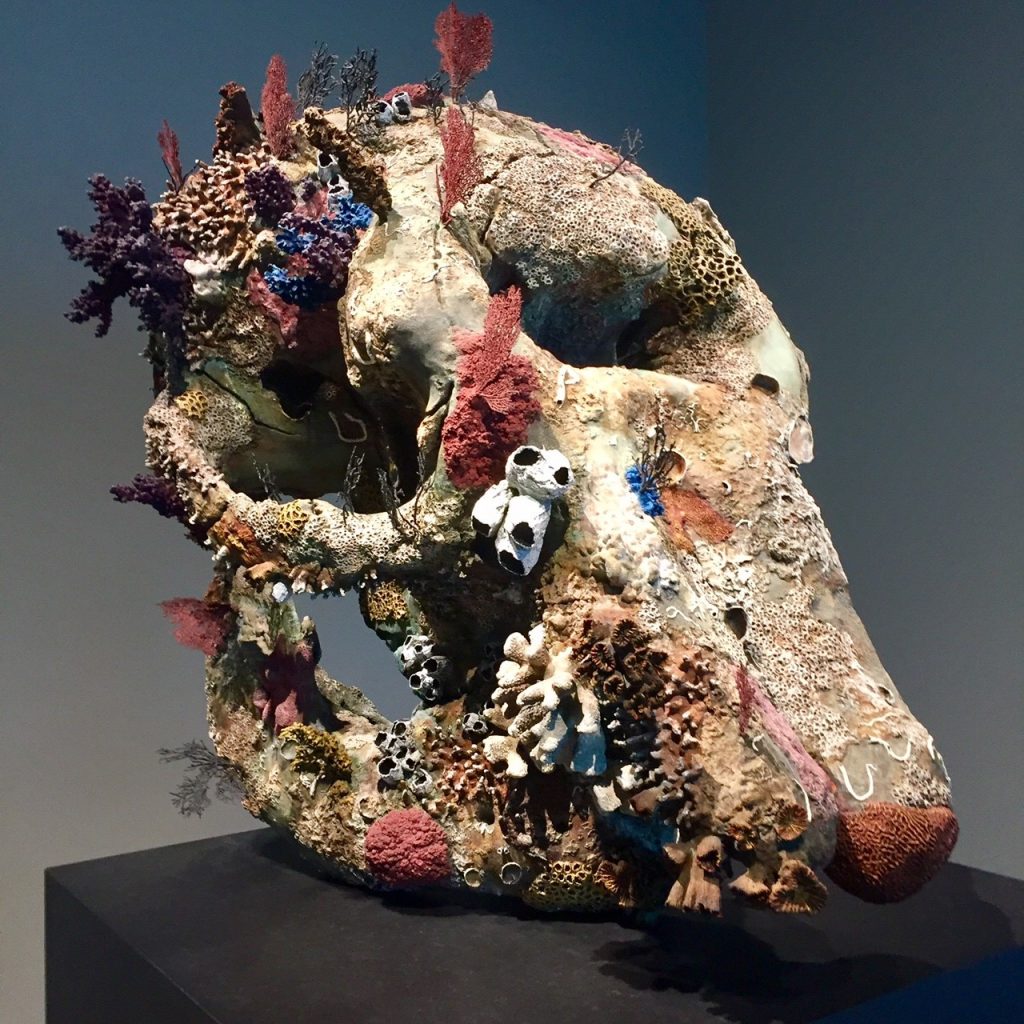
For nearly four months, Elena Geuna, the show’s curator, has been orchestrating the mammoth transport of sculptures — some weighing as much as four tons — by boat, many from a foundry in Gloucestershire, England, and installing videos and countless tiny objects that fill the show’s nearly two dozen glass vitrines (each vitrine is considered one artwork). All told, more than 1,000 suppliers from places like Italy, Germany, South Africa and the United States were involved in making the show.
“It’s like Elvis coming back to play in Las Vegas,” said Oliver Barker, chairman of Sotheby’s Europe. “After more than a decade, Damien is once again allowing his work to be scrutinized by a large public, and in doing so he is definitely putting his neck on the line.”
Mr. Barker has witnessed Mr. Hirst’s gambles up close. In 2008, he helped mastermind Mr. Hirst’s audacious attempt at bypassing his dealers by organizing an epic auction at Sotheby’s of more than 200 of his works. It took place on the same fateful day that Lehman Brothers declared bankruptcy, yet Mr. Hirst still managed to sell $200 million of his work.
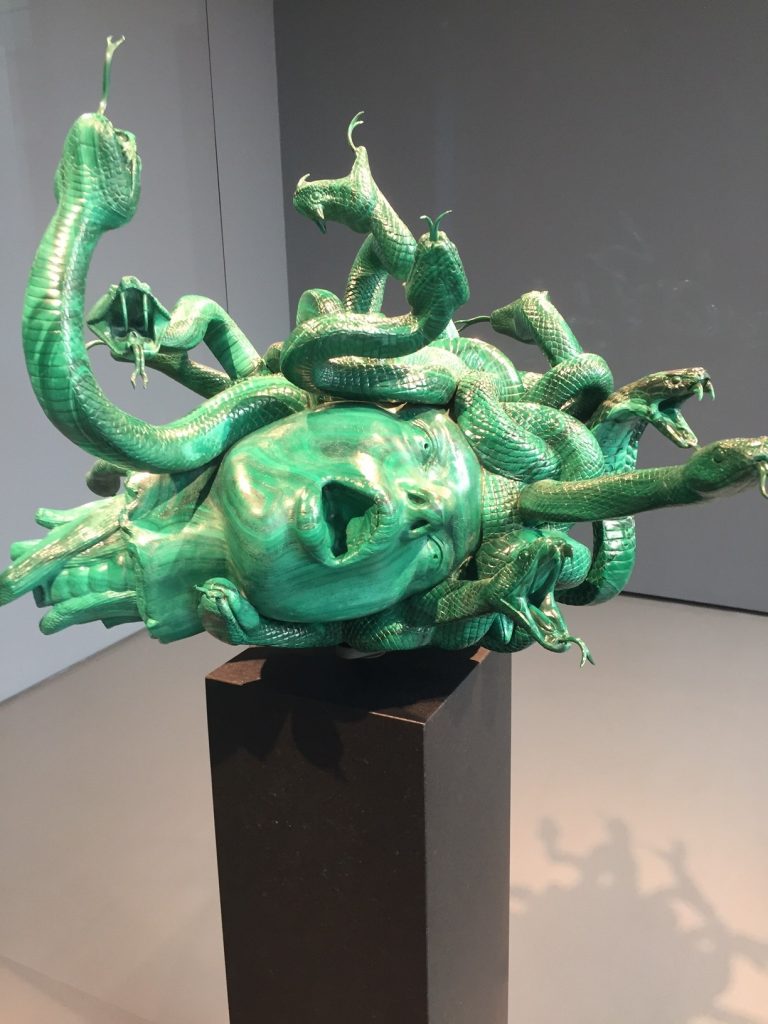
“The Severed Head of Medusa,” said to be priced at $4 million.
While one of Mr. Hirst’s Spot paintings sold in a Sotheby’s sale in November for just $396,500— a steep decline from the $1.7 million they sometimes commanded in 2013 — prices have been inching up. White Cube, a gallery in London, claimed to have sold a 2015 painting by Mr. Hirst, “Holbein (Artists’ Watercolors),” measuring 13 feet wide, priced at £750,000 (more than $930,000), showing he could still sell at a reasonably high level.
The new work is a step up, with a severed head of Medusa said to be priced at $4 million. With the contemporary art market showing signs of strengthening, Mr. Barker called the prices “well moderated.” But the monumental scale of many works may make it difficult to sell to anyone who does not own a museum-size house.
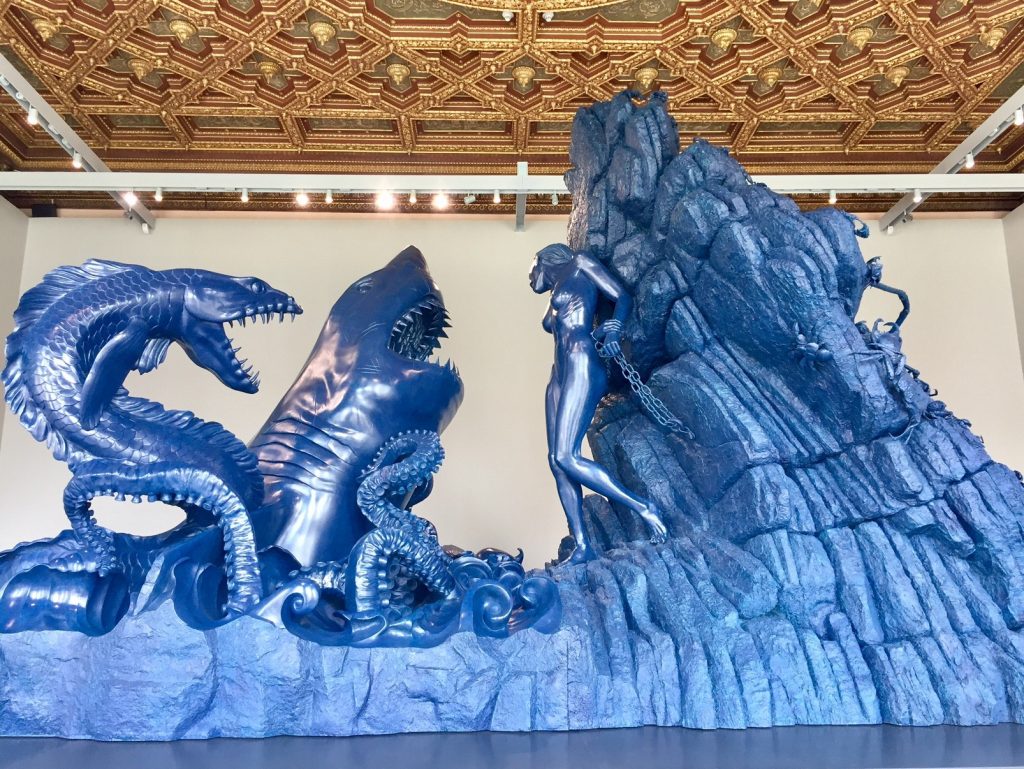
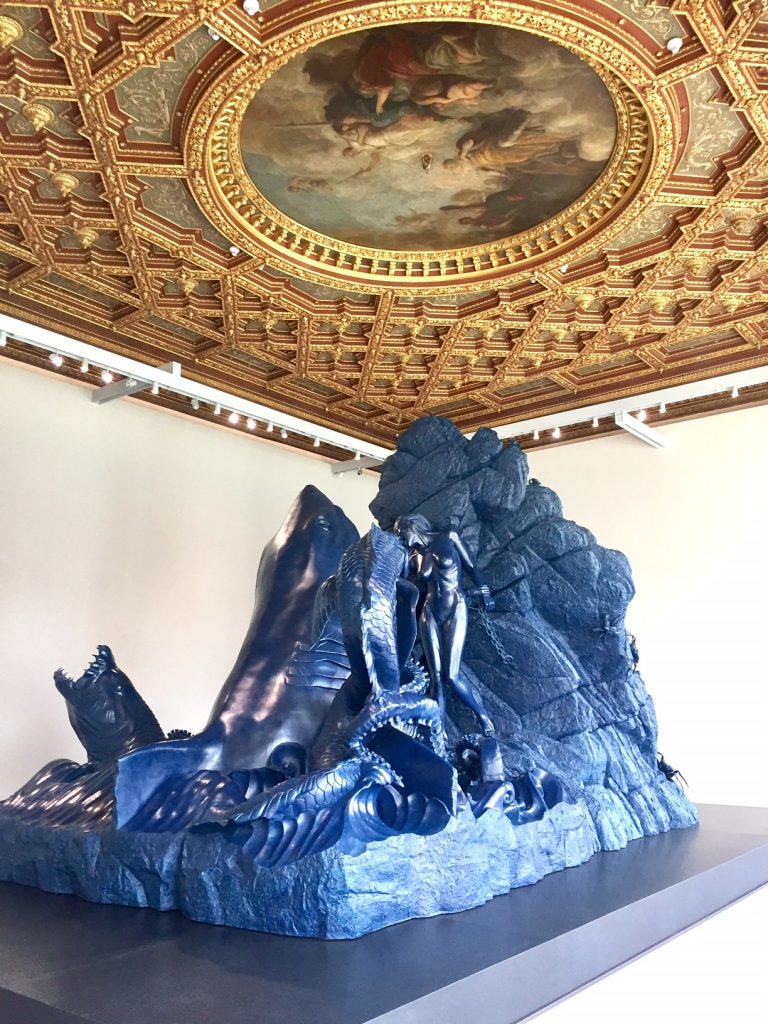
“Damien is an astonishing survivor,” said Robert Storr, a curator, professor, critic and former dean of the Yale School of Art. “He’ll probably produce a spectacle, but I doubt it will be of lasting interest artistically. Unlike Jeff Koons, he rarely produces surprises anymore.” He added that while the public appetite for temporary exhibitions has grown, the audience for serious art has shrunk, and that the financially interested people like collectors and dealers are a very small group.
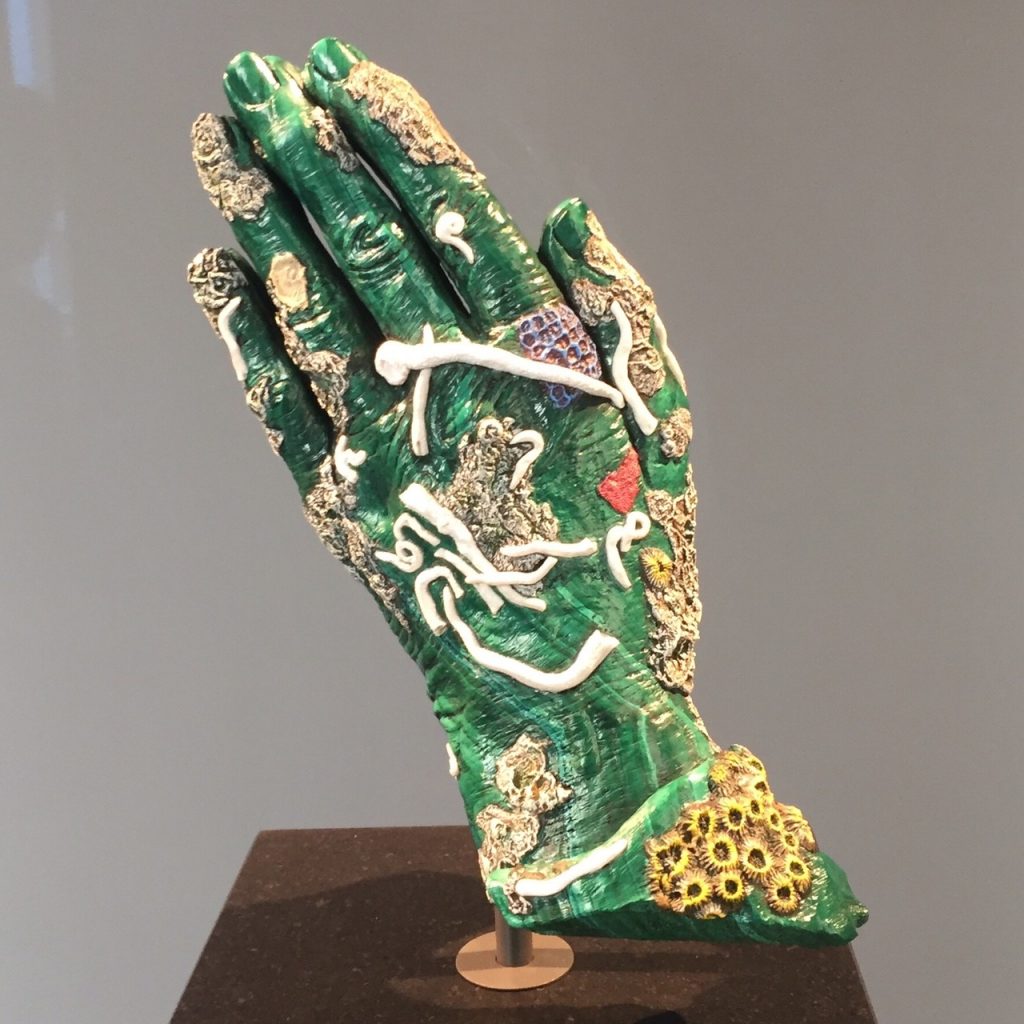
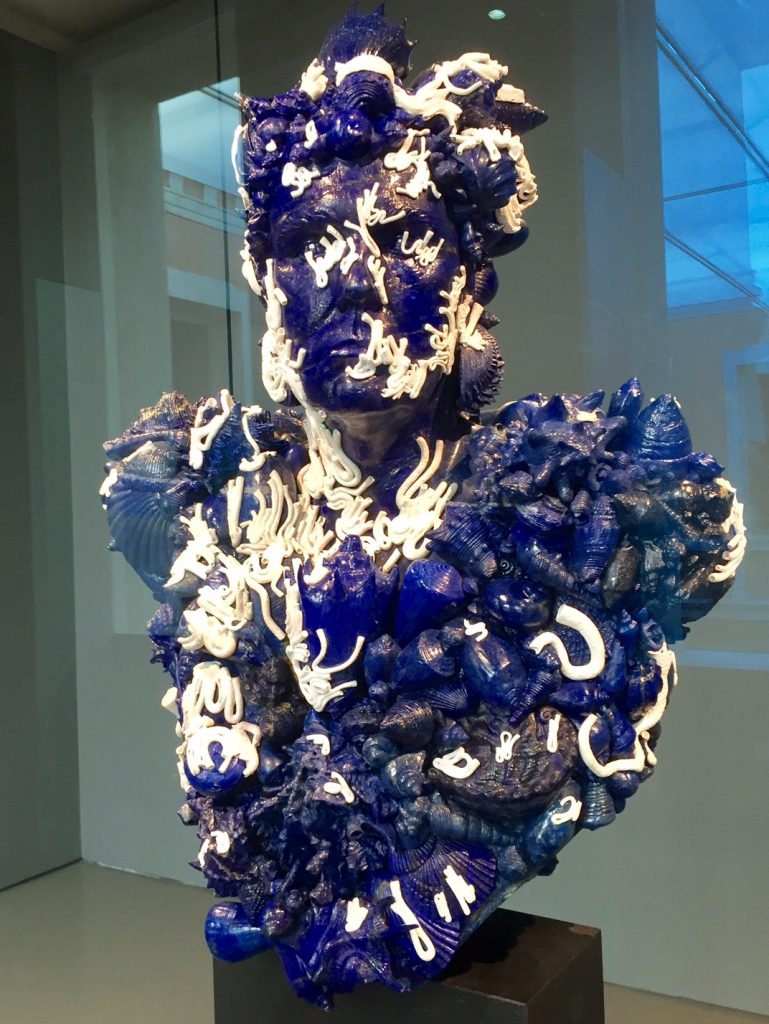
None of the new works are unique; each is made in an edition of three, with two artist’s proofs. In each edition, there are three sculptures: what Mr. Hirst describes as the “Coral,” meaning the work created to look like its “original” encrusted state from the deep; a “Treasure,” the artwork seemingly restored by conservators for display; and the “Copy,” which purports to be a modern museum reproduction of the original.
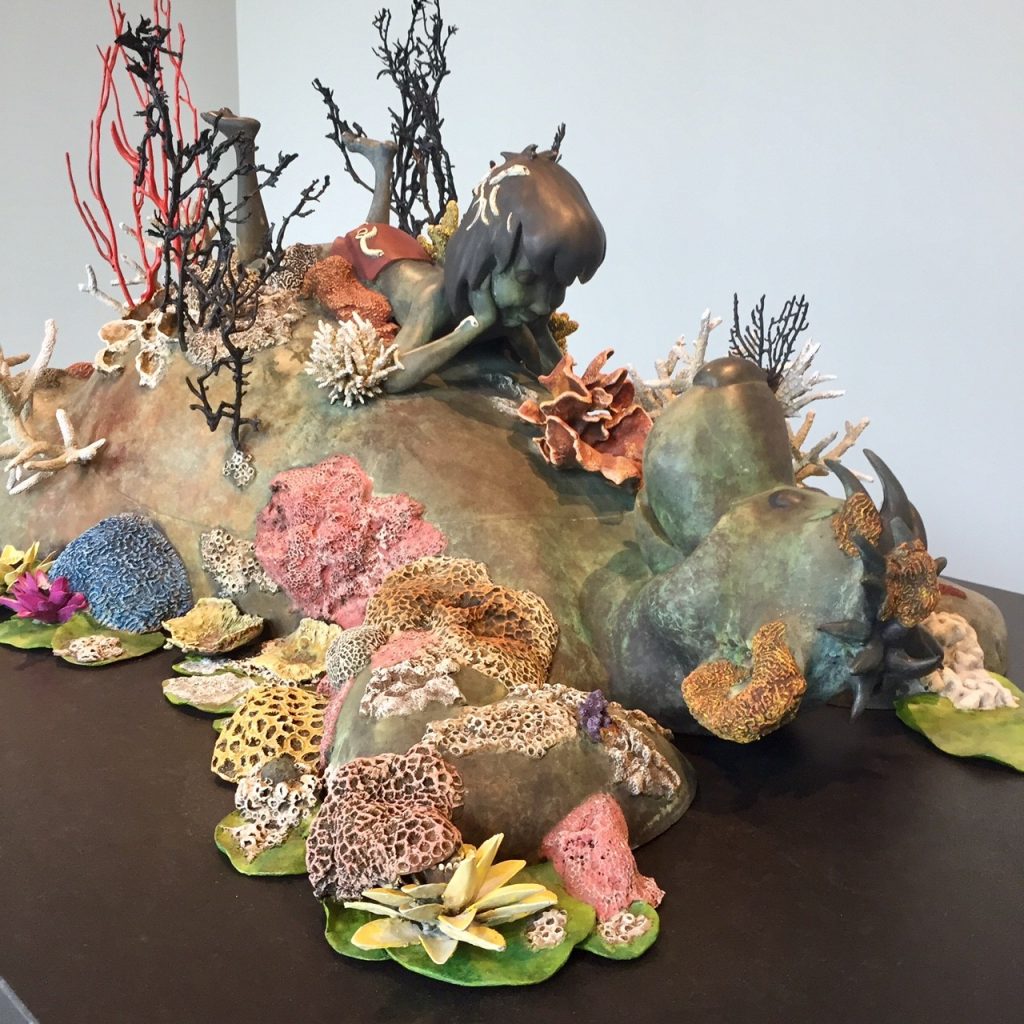

It has been 13 years since Mr. Hirst’s last major show, a retrospective at the Naples National Archaeological Museum. Still, he has not been totally out of the limelight. In 2015, he opened the Newport Street Gallery, a museum space in South London where he has presented exhibitions from his personal collection, by artists including Jeff Koons. Many in the art world wondered if Mr. Hirst had mellowed into a gentleman curator.
“After the Sotheby’s auction and after making the skull, I started thinking of what to do next,” Mr. Hirst recalled, referring to his 2007 human skull cast in platinum and covered with 8,601 diamonds, which was purchased by a consortium of investors said to have included Mr. Hirst.
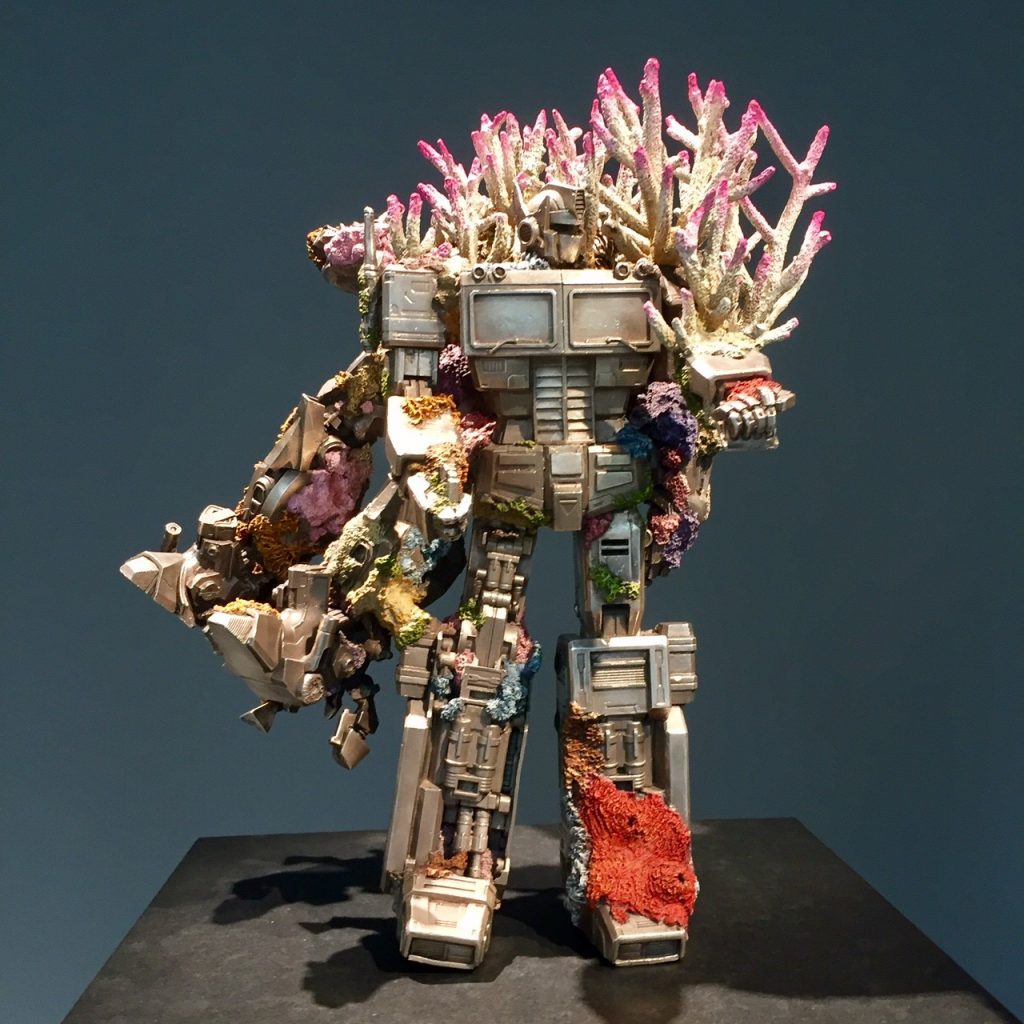
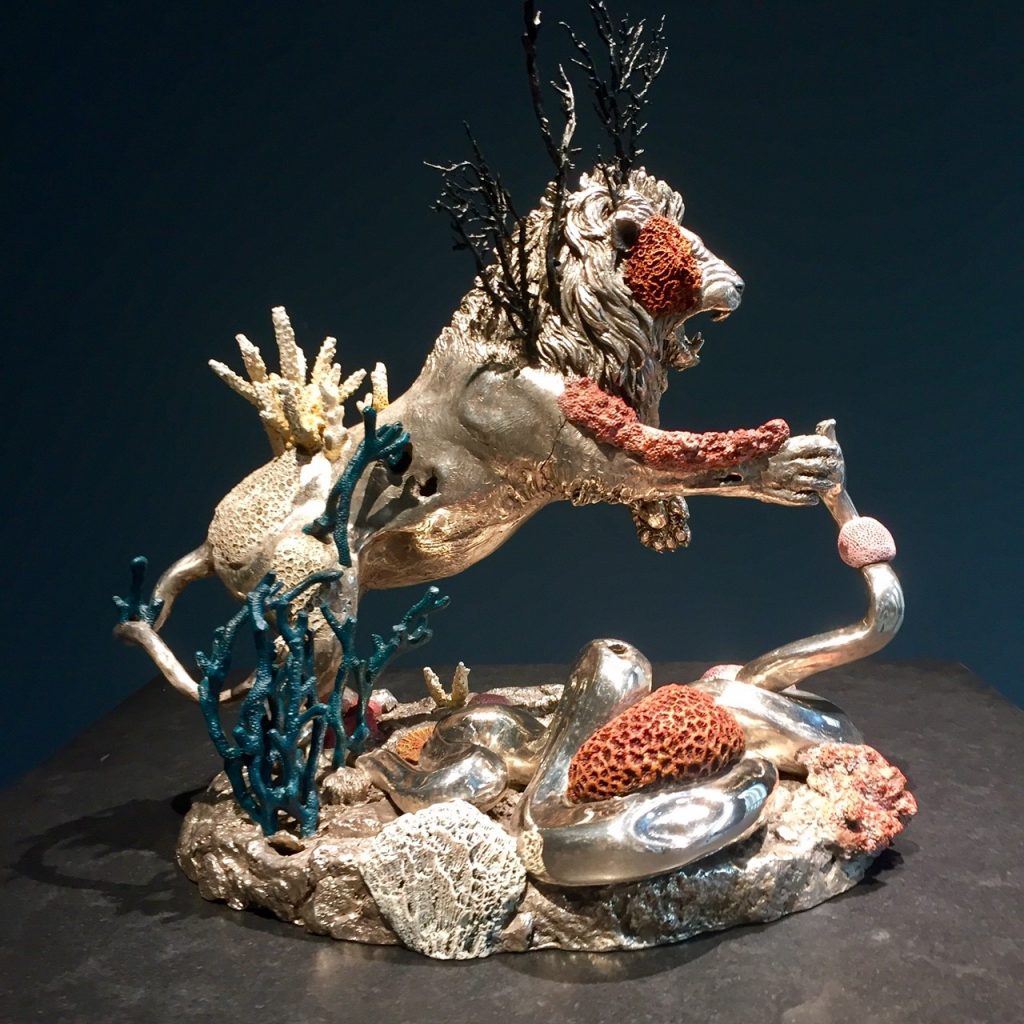
He was standing in the grand atrium that is the entrance to the Palazzo Grassi on the Grand Canal, staring at the body of a monumental demon that consumes the space, its severed head replete with fangs and a serpent’s tongue. “At the time I was working on my garden in Devon, which I realized was going to take 10 years,” he said. “Art, like gardens, often takes time to grow.”
When he talks about his work, Mr. Hirst manages a tone that is sincere but always tinged with irony. Since childhood, he said, he has been obsessed with mythology. “I came up with the title first,” he recalled, and then invented the tale, including the protagonist, Amotan, the collector whose bronze bust seems to resemble the face of the artist himself.
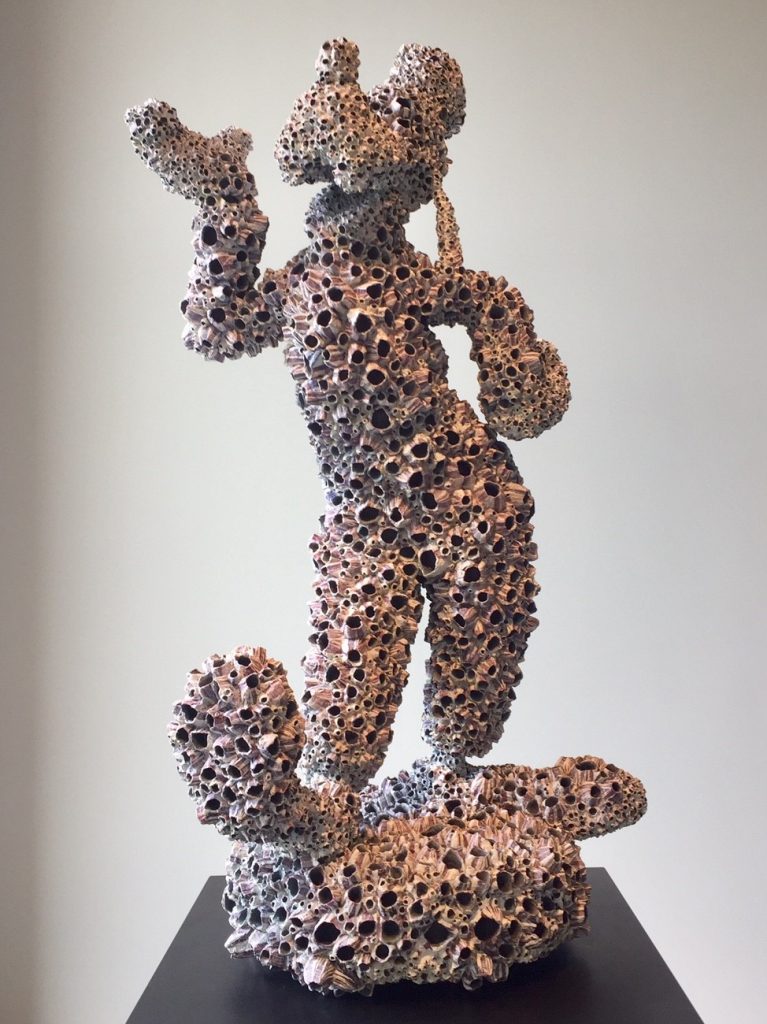
“It’s me, it’s Pinault, it’s Walt Disney, it’s anyone who has a vision,” Mr. Hirst said.
Stefan Edlis, a Chicago philanthropist who has been buying Mr. Hirst’s work for decades, said, “The first time I had an inkling Damien was up to something was eight years ago, when I saw the Medusa’s head in his studio.” So enamored was Mr. Edlis with “a brilliant fairy tale” that he bought all three versions of “Hermaphrodite,” a 4½-foot-tall bronze made in 2009. Mr. Edlis is one of the few collectors who have admitted making a purchase. Many art advisers and collectors are skeptical, waiting to see the works first.
For several months now, salespeople from Gagosian and White Cube, which represent Mr. Hirst, have been on what Mr. Edlis described as a “roadshow,” traveling around to collectors armed with iPad images displaying all the works. These public sales efforts have prompted critics to say that Mr. Pinault is using his spaces for commercial purposes. “What can I say?” Mr. Pinault responded in a telephone interview. “I cannot avoid those comments. But this is not commercial. It’s about showing the art that I love.”
A 30-year collector of Mr. Hirst’s work, Mr. Pinault responded coyly, when asked by email if he had bought anything himself: “Perhaps. Probably. But I am not going to tell you which ones!”
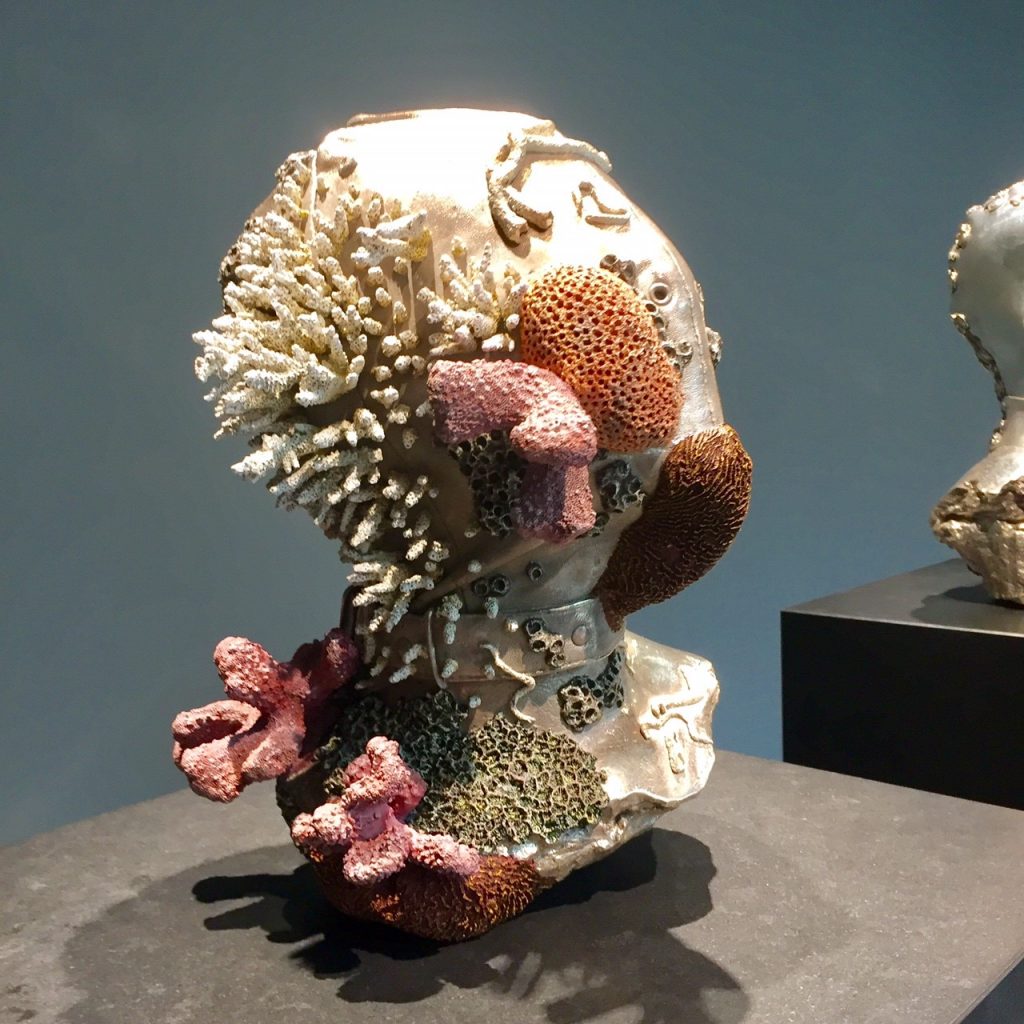
Hirst devotees will immediately see his signature themes. There are skulls and vitrines, but unlike his glass-fronted medicine cabinets from the late 1980s and ’90s that were filled with drugs or cigarette butts, the new display cases hold gold coins, jewelry and “ancient” artifacts. The idea of ambiguity — is it old or made yesterday? Real or make believe? — has existed in his work throughout his 30-year career. But this time Mr. Hirst has carried his theme to its extreme, employing a film crew to shoot divers on a pretend rescue mission off Zanzibar documenting sculptures being pulled from the sea. And what to make of the unexplained references to pop culture, figures like Mickey Mouse and the vocalist Yolandi Visser, who appears as a Mesopotamian goddess?
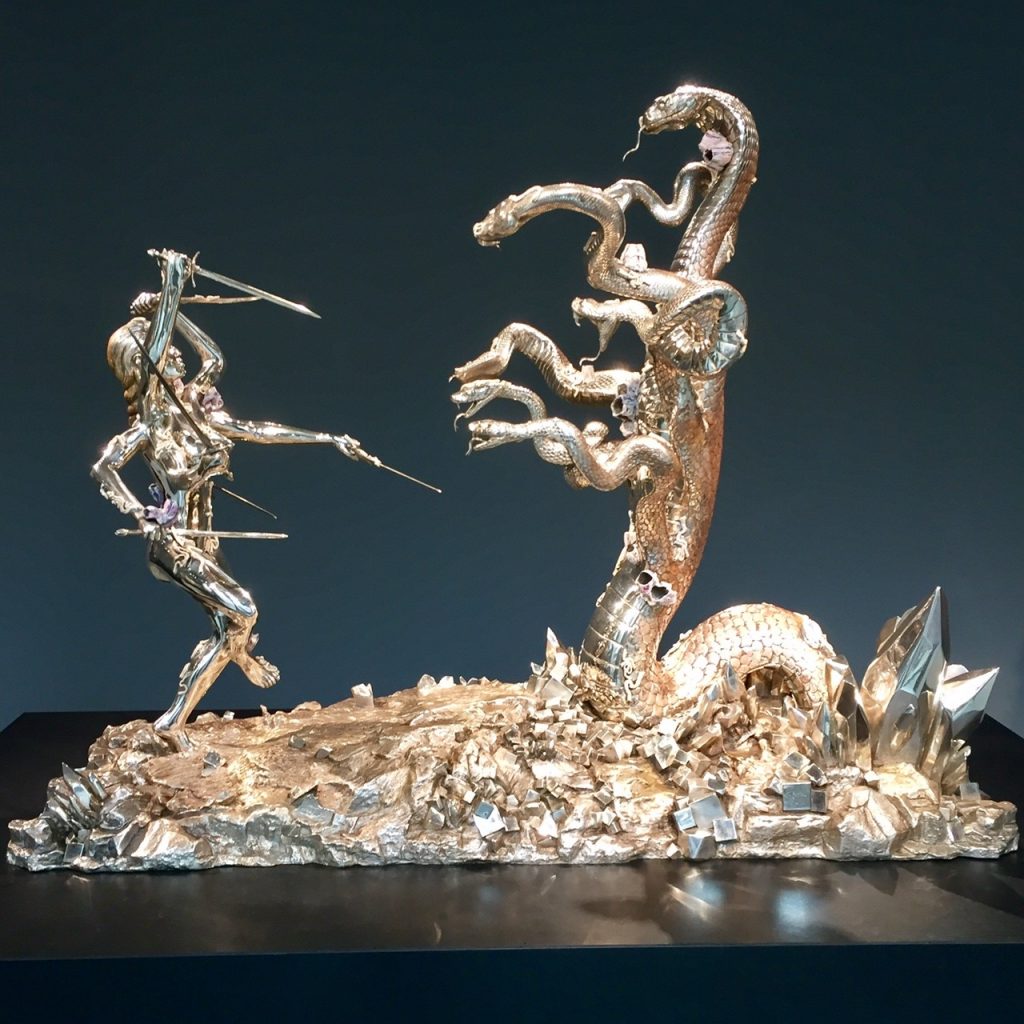

“Believing,” Mr. Hirst kept repeating. “Believing, it’s different from religion. It’s what we need to do today.” Although he began working on the show years before “Brexit,” Britain’s planned withdrawal from the European Union, or Donald J. Trump became president, Mr. Hirst likes to think the exhibition reflects the world’s current political mood.
“When you’re an artist, everything you do you think is about the world we are living in today,” he said. “And now,” he added, “with all the liars running our governments, it’s far easier to believe in the past than it is in the future.”

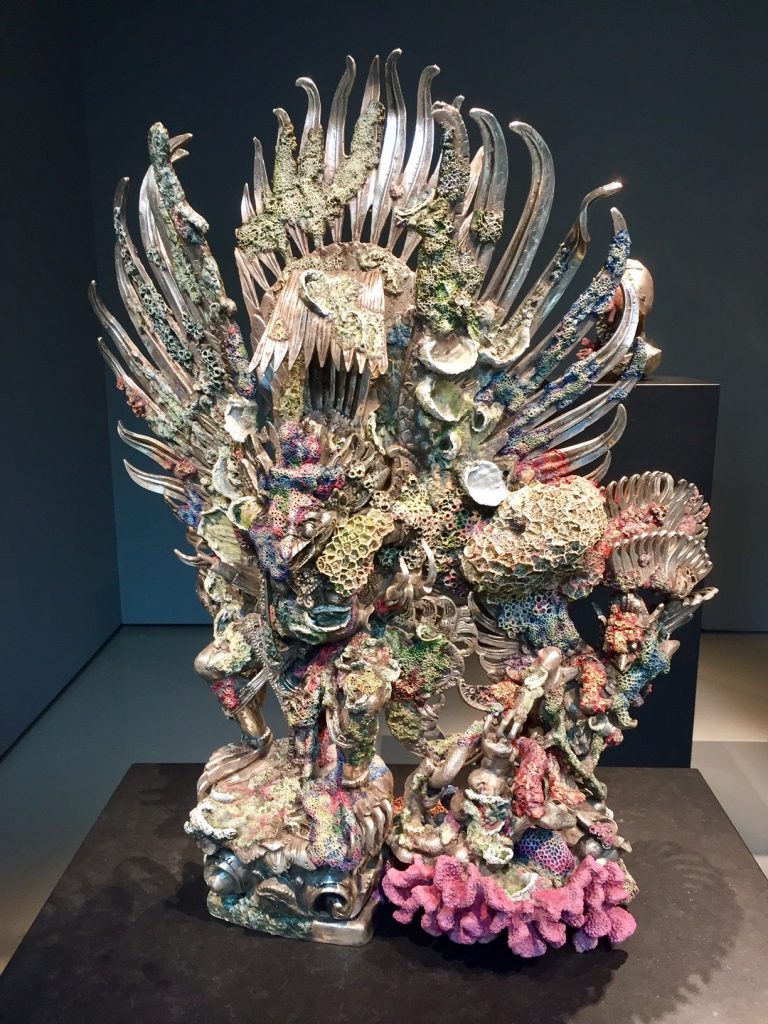


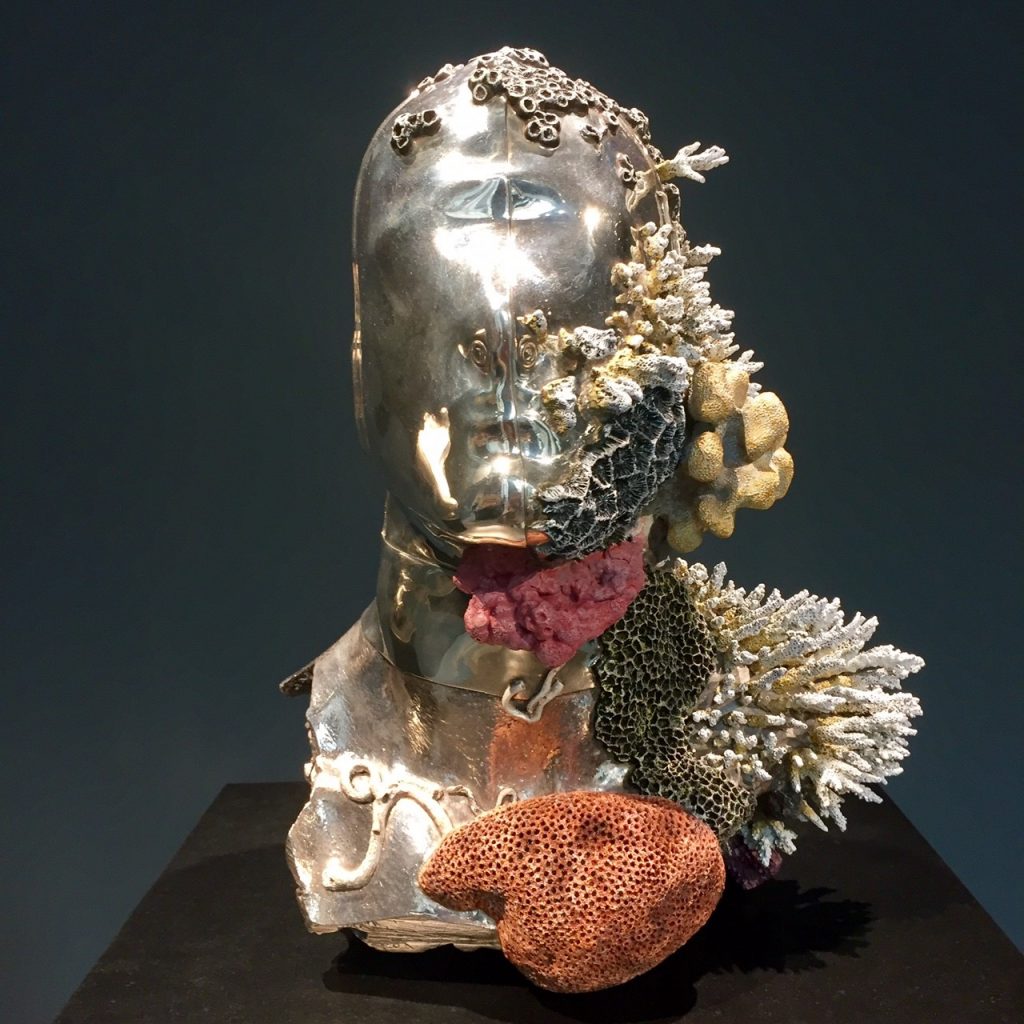
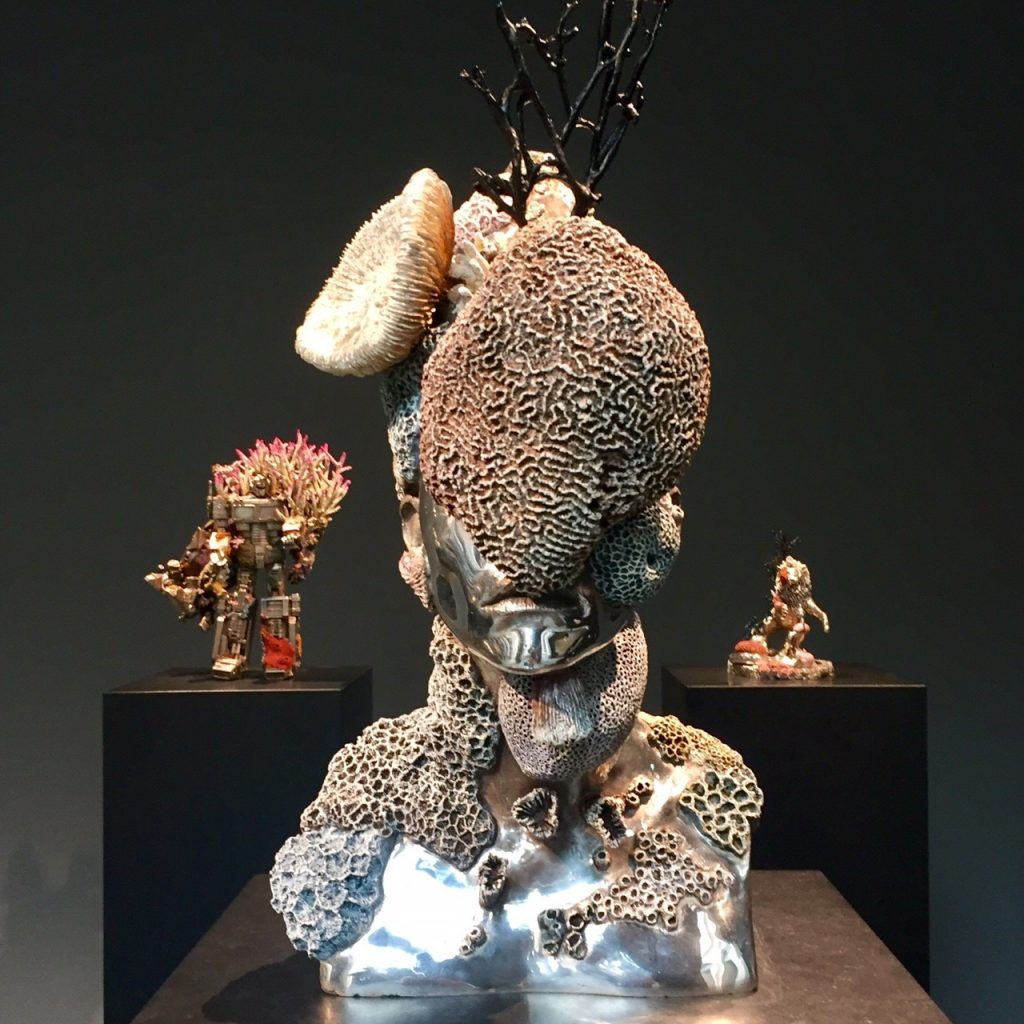
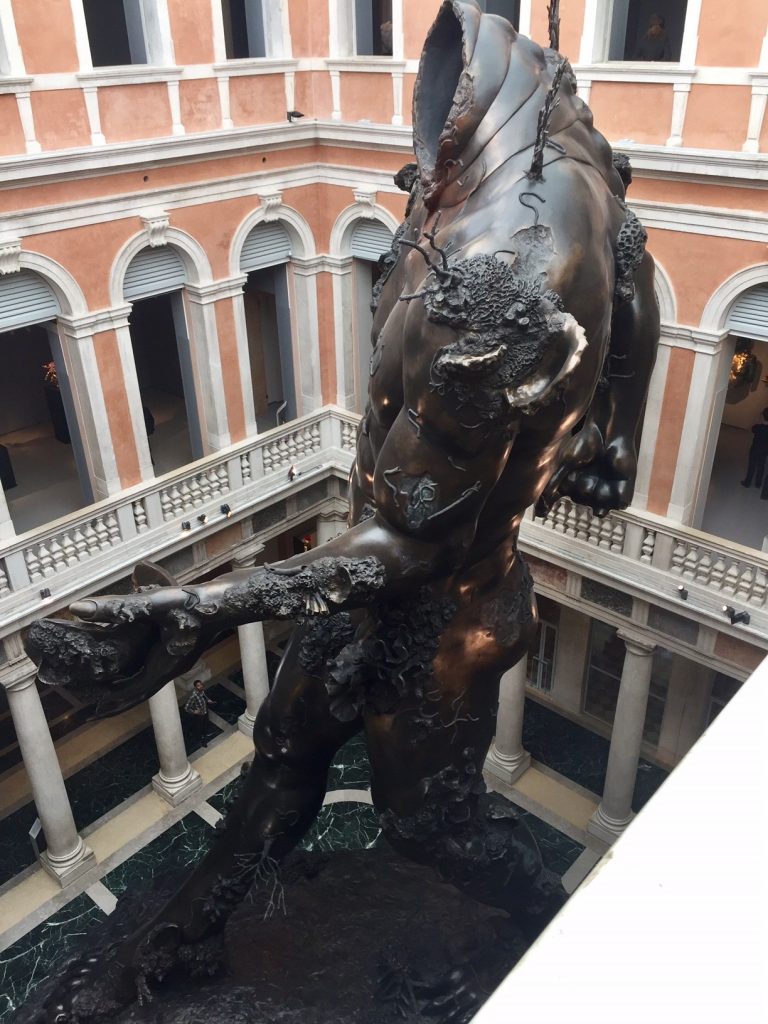
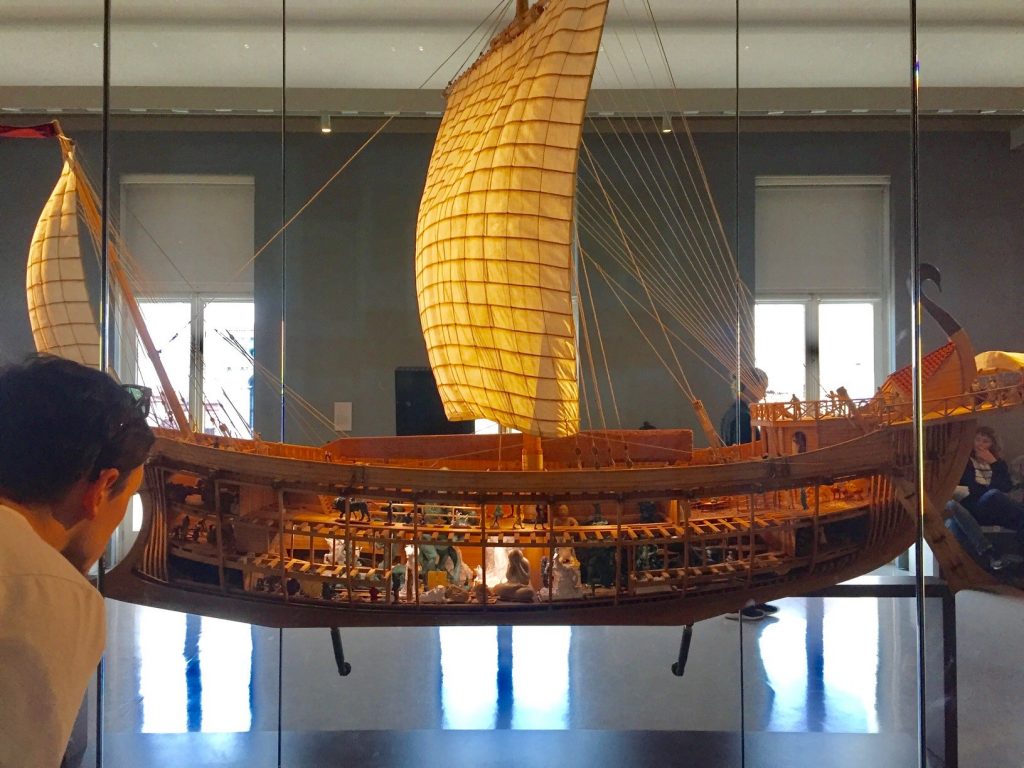
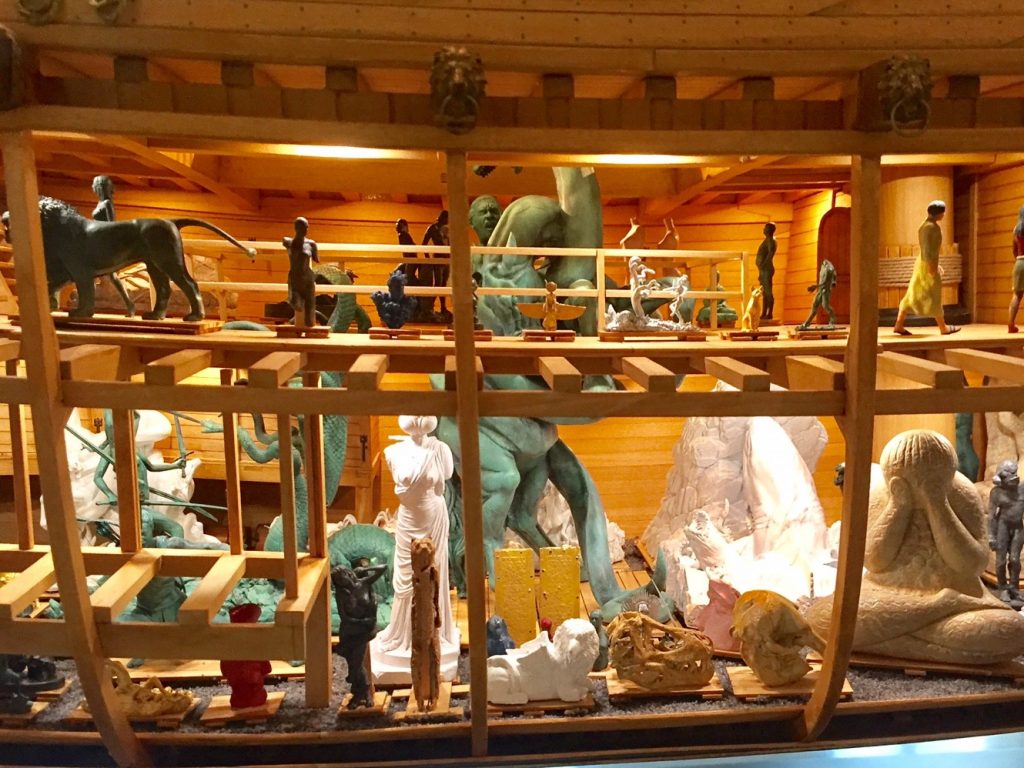
A scaled miniature ship of how the items would have been transported from the coast of Africa to the temple.
*All images by me unless otherwise noted.
For more design inspiration, please follow along on Instagram, Pinterest, Facebook, Twitter and subscribe to Bespoke Banter. Thanks for visiting!

